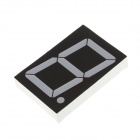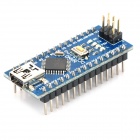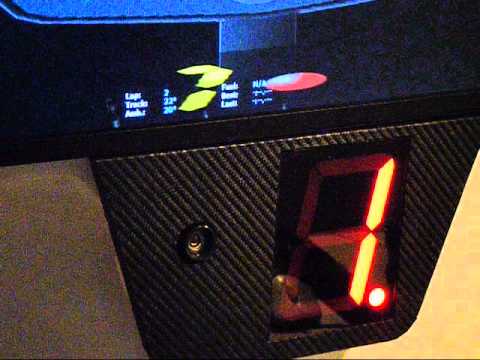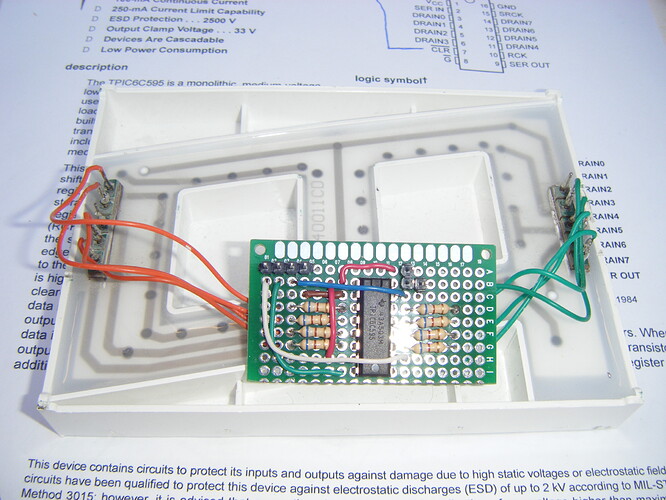Hello guys ![]()
I would like to drive a 4" large 7-segments LED with my arduino nano.



This 7-segments is common anode
and 12V driven.
I have understood I have to use a Constant-Current LED Sink Driver
(sink and not source because of common anode).
I wish you could tell me what reference of driver I could buy in 2014?
as I have googled many threads but often the chip references are outdated... :~
(Allegro 6278EAT from this post on deleteaso.com)
Could you please tell me what I can buy?
Thanks
yours
Mat
PS : I know there is an alternative but I would like to not use 7 NPN transistors and 14 resistors to simplify the wiring.
edit : here is what I have done
thanks to PaulRB, CrossRoads, Grumpy_Mike, Paul__B !
-> job done with TPIC6C595
see in attachement PCB and wiring diagram
- arduino SPI library
Here is the result in video!
Thanks guys for the help so far!
/*
Shift Register Example for 74HC595 shift register by Tom Igoe
Digital Pot Control by Tom Igoe
Thanks to Heather Dewey-Hagborg for the original tutorial, 2005
Thanks to CrossRoads!
by RacingMat 09-2014
*/
// include the SPI library:
#include <SPI.h>
byte fontArray[] = {
// dp-a-b-c-d-e-f-g
0b11101110, // 0
0b00101000, // 1
0b11001101, // 2
0b01101101, // 3
0b00101011, // 4
0b01100111, // 5
0b11100111, // 6
0b00101100, // 7
0b11101111, // 8
0b01101111, // 9
0b00010000, // DP
};
//Pin connected to Data in SER IN pin 2 of 6c595
const int dataPin = 11;
//Pin connected to latch pin (SRCK)pin 15 of 6c595
const int latchPin = 13;
//Pin connected to clock pin (RCK) pin 10 of 6c595 as the slave select
const int slaveSelectPin = 10;
void setup() {
// set the Pins as output:
pinMode(dataPin, OUTPUT);
pinMode(latchPin, OUTPUT);
pinMode (slaveSelectPin, OUTPUT);
Serial.begin(9600);
// initialize SPI:
SPI.begin();
// take the SS pin low to select the chip:
digitalWrite(slaveSelectPin,LOW);
}
void loop() {
for (int i=0; i <= 10; i++){
delay(500);
digitalWrite (slaveSelectPin, LOW); // << RCLK line goes low
SPI.transfer (fontArray[i]); // << SRCLK goes high-low 8 times to output 8 bits of data
digitalWrite (slaveSelectPin, HIGH); // data outputs change on this rising edge << RCLK line goes high to move data into output register
}
}
edit :
Some news:
this video to demonstrate how Simtools can extract data from racing games in real time
it's really synchronized between GT Legends and the LDC display ![]()
Physically how will the digit to display be transmitted to the Arduino?
It is via a USB com port
There are two free softwares which can drive actuators for dynamic simulators and dashboard incidentally
-Simtools software
-xSim software with an example of more complex digital dashboard




